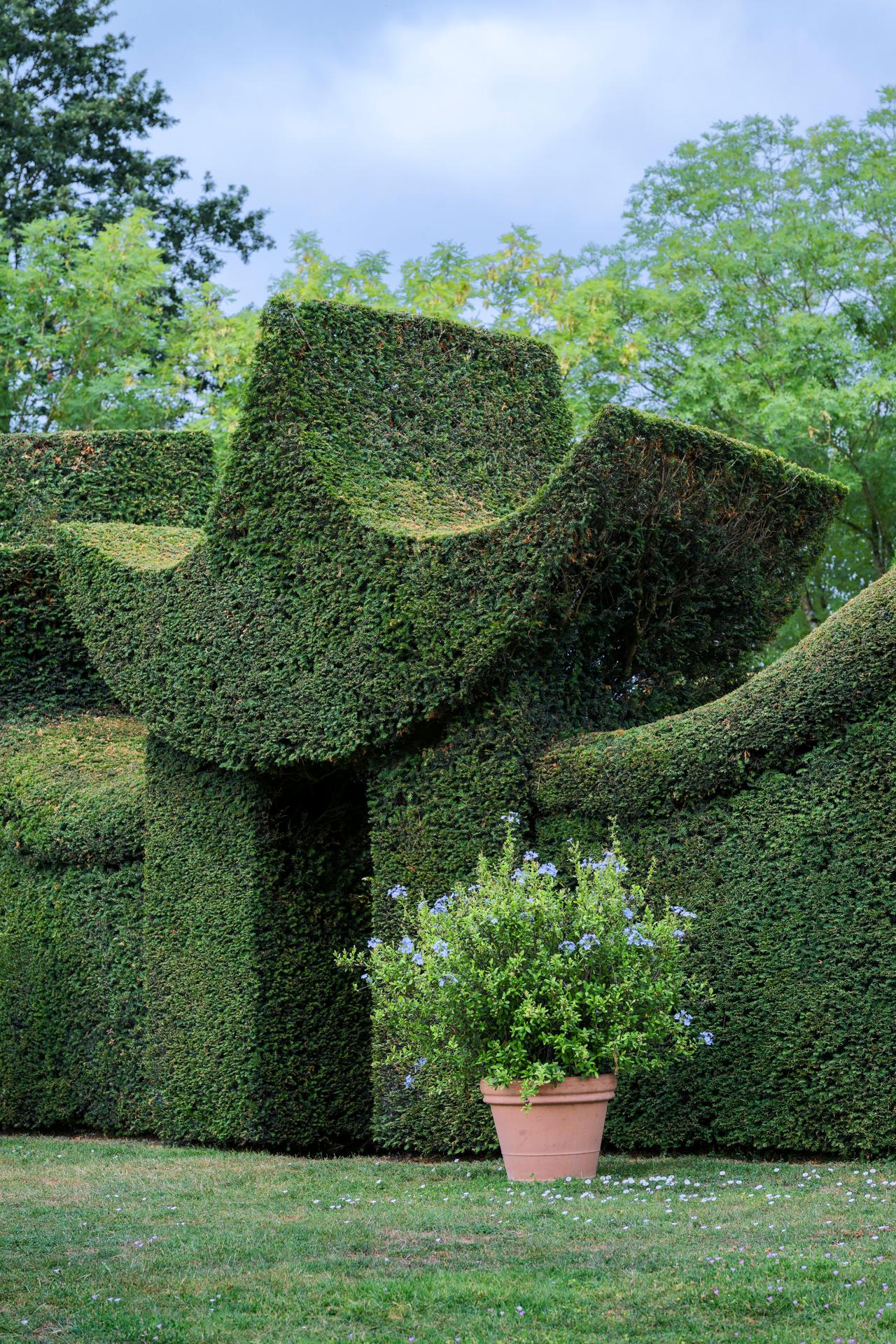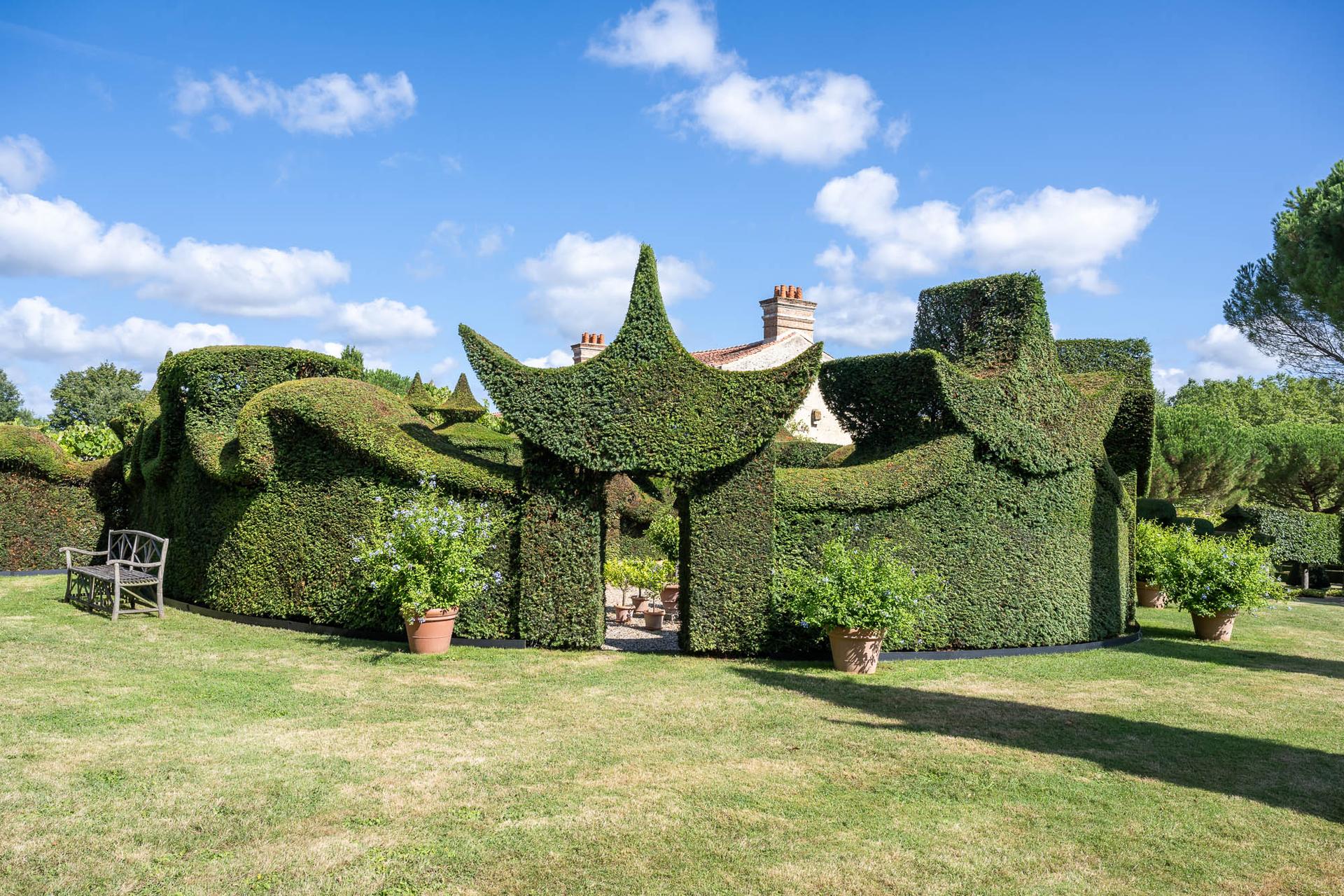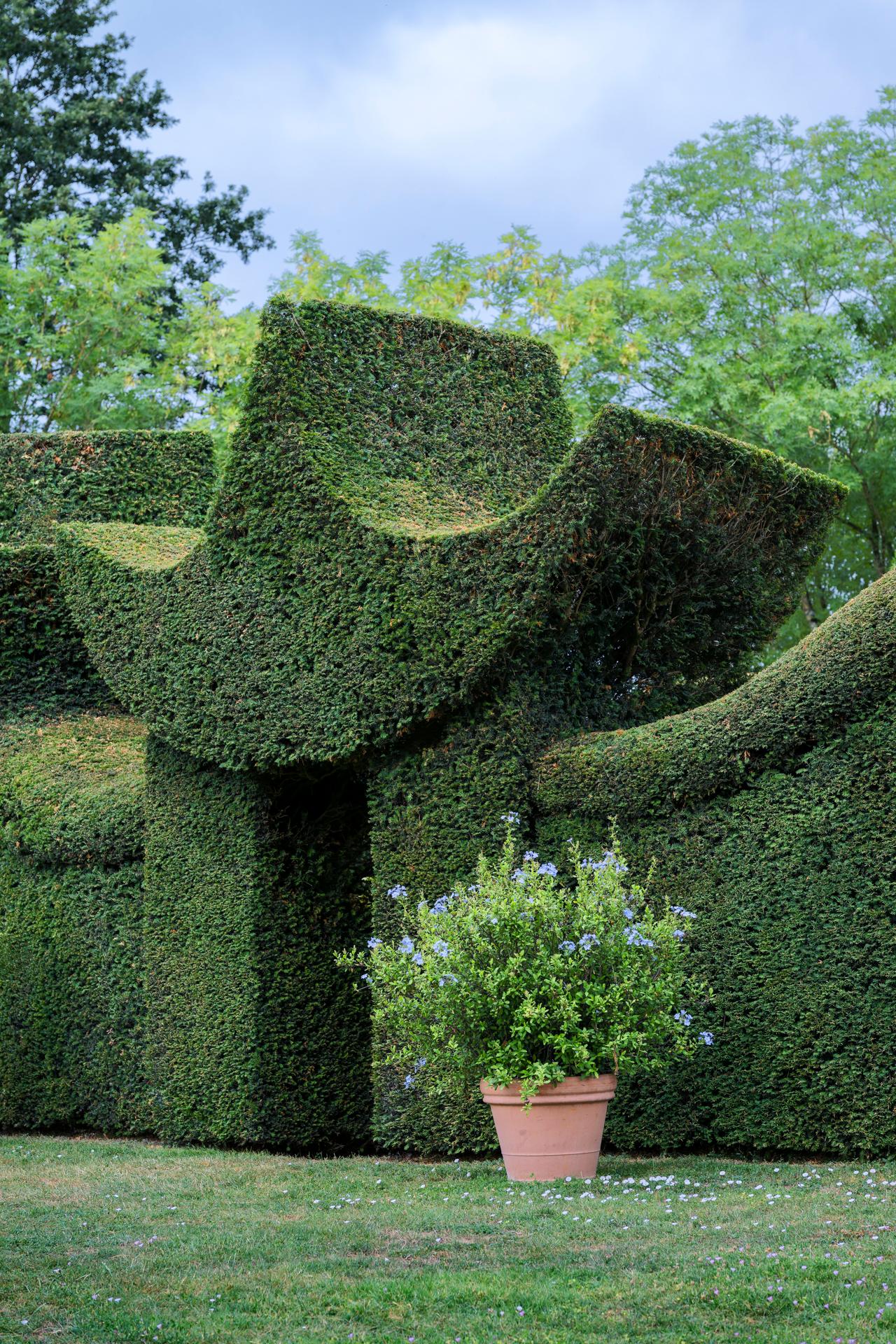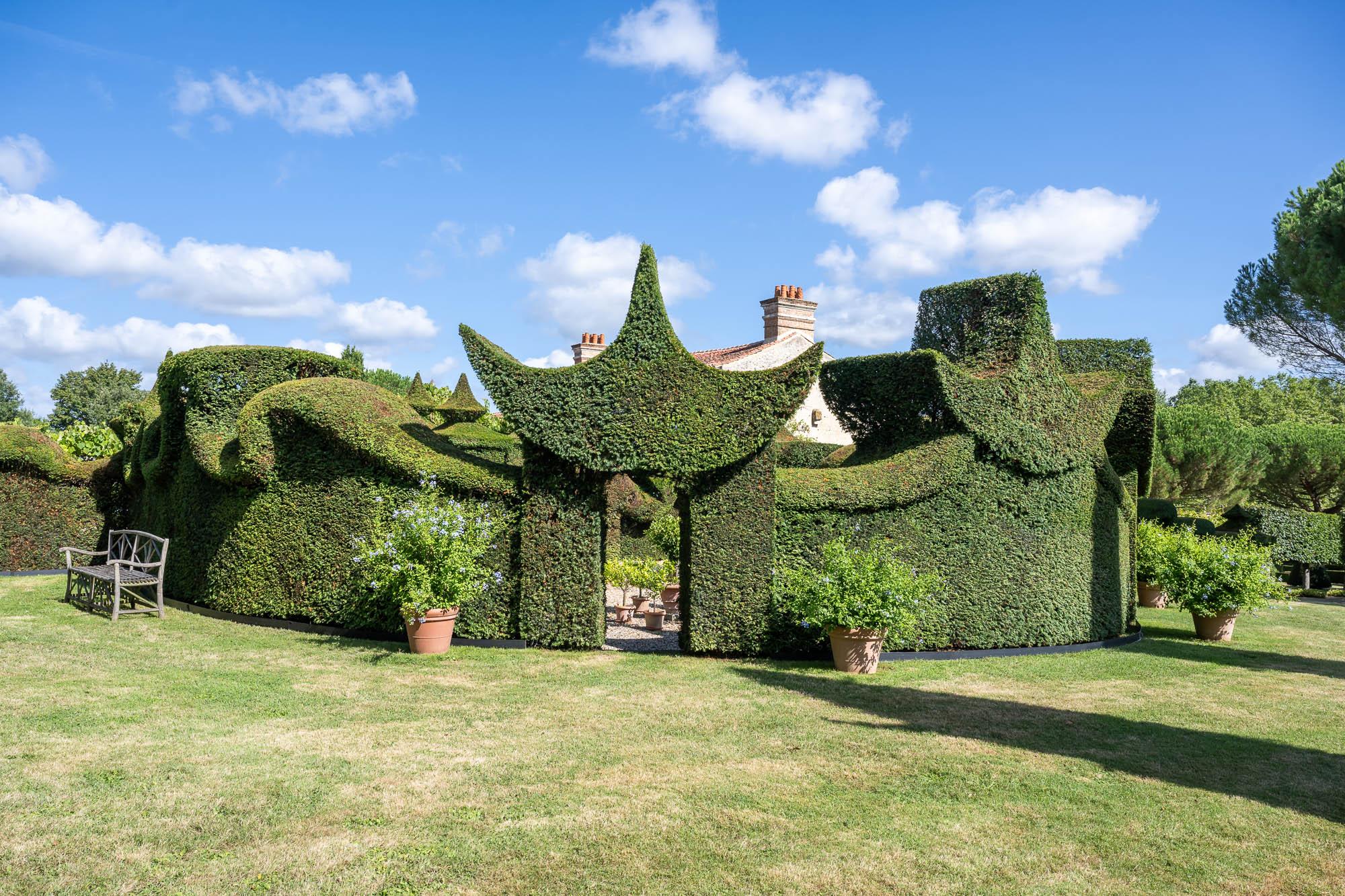Théâtre de Verdure (Yew Theatre)
For a man of the stage such as William Christie, what could be more natural than inviting theatre into his garden? This architecture of greenery, spectacular with its extravagant arches, is also a facetious nod to the Chinese-inspired motifs of the baroque era. Who ever said that a garden couldn’t be humorous?

The Théâtre de Verdure, in William Christie's words:
This is a quite extraordinary space: the yew-tree theater. I wanted to create a feature that would stand out from the rest of the garden and contrast with it - a horticultural caprice that would depart from the more sober and formal parts of the ensemble adjacent to it.
Gardener's word
The garden's main structural plants are boxwood, hornbeam, lime and yew. The Théâtre de Verdure is built from yew (Taxus baccata), which has been widely used in European gardens since the 16th century. Its tolerance to severe pruning makes it the perfect choice for formal hedges. It grows back even when cut back to bare branches.
John Hoyland, garden adviser at Glyndebourne and friend of William Christie
![logo des arts florissants z-[200]](/_next/static/media/logo-menu-black.27dda4ca.svg)



















